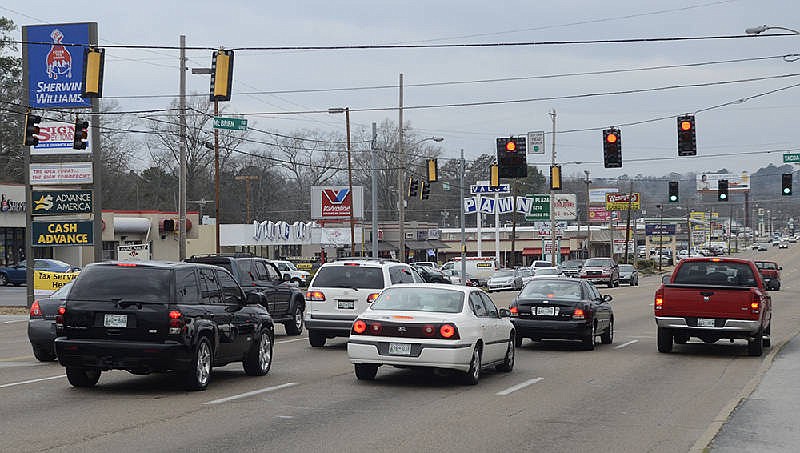Editor's note: This story first appeared in Community News.
If the local planning commission gives the green light next month, the Brainerd area will be one step closer to achieving its dream of beautification.
Chattanooga planning officials are hoping to expand the Brainerd Overlay Zone and apply similar zoning requirements to roads surrounding the Chattanooga Metropolitan Airport.
The Brainerd Overlay Zone, implemented in 2014 as part of the "Brainerd ... a Vision for Today" master plan, now covers the mile-long stretch of Brainerd Road between its intersections with Spring Creek and East Brainerd roads.
The code calls for business owners to beautify the area by installing street-lining trees and landscaping, and it implements regulations to clear the legion of signs cluttering the commercial area. It also requires business owners to create pedestrian and bike lanes and build parking spaces at the back - rather than the front - of some establishments, among other specifications.
If all goes according to plan, the overlay zone would be extended to include all properties on Brainerd Road and Lee Highway from the Spring Creek Road intersection to the intersection with Highway 153, stretching about another 3 miles.
The Chattanooga City Council gave planners the go-ahead to start working on the update for the zoning ordinance in May, but Councilwoman Carol Berz said expansion was always part of the plan.
"The overlay started as a demonstration project to show that 'Yes, we can!' We can turn the area around," Berz told local property owners during a public meeting about the proposal last month.
With the update will come an adjustment to how the changes are triggered. Right now, the requirements to improve area aesthetics and become more pedestrian- and bike-friendly apply only to new businesses and to existing businesses that want to expand by more than 25 percent.
Under the revised code, however, new business owners moving into an existing property will be required only to meet the regulations for landscaping, parking and walkability if they plan significant expansion for the exterior of the building, said Sarah Robbins, city development review planner.
The number of regulations triggered by redevelopment will change to reflect the cumulative scope of the work. Businesses expanding by less than 10 percent, for example, will be required only to do a basic utility screening on the property. Businesses expanding by 10 to 25 percent will be required to do the utility screening, update their signs and meet standards set for parking additions.
"[The cost] was just turning out to be a little excessive for the investment the property owner was planning to do on the property," Robbins explained. "So [we're] trying to make it more equitable to the work investment property owners are doing on the property."
If approved, the Lovell Field Gateway Overlay Zone will be applied to Airport and Shepherd roads.
While requirements for the zoning ordinance will mirror those slated for Brainerd Road, business owners along Airport and Shepherd roads will not be required to install street trees or sidewalks. The change was advised by representatives from the city's Public Works Department, who recommended planners keep the open stormwater ditches lining the corridor intact, as the work needed to cover the conveyance system would be extensive and costly.
Robbins said planners are working with the city to determine a larger project to address the ditches at a later time.
Though commuters along Airport and Shepherd roads won't be seeing trees pop up along storefronts, they can still expect a little more greenery should the proposal be approved. Just like the Brainerd Overlay Zone, the regulations will require businesses in the newly proposed area to have at least one shade tree for every seven parking spaces, located within 40 feet of each space.
"So the beautification element is still a high priority in this corridor," Berz said.
Beautification in the area is especially important, she added, since it serves as a first impression of Chattanooga for travelers leaving the airport.
"We're getting piles of international traffic," Berz said. "We're getting very successful in Chattanooga, and the entryways need to look better."
Both overlay zones will apply only to new commercial or multifamily development or additions. The standards will not apply to single-family residential homes.
The proposals will go before the Chattanooga- Hamilton County Regional Planning Commission Feb. 12. Commissioners will pass on their recommendations to the Chattanooga City Council for the final vote.
Email Myron Madden at mmadden@timesfreepress.com.
